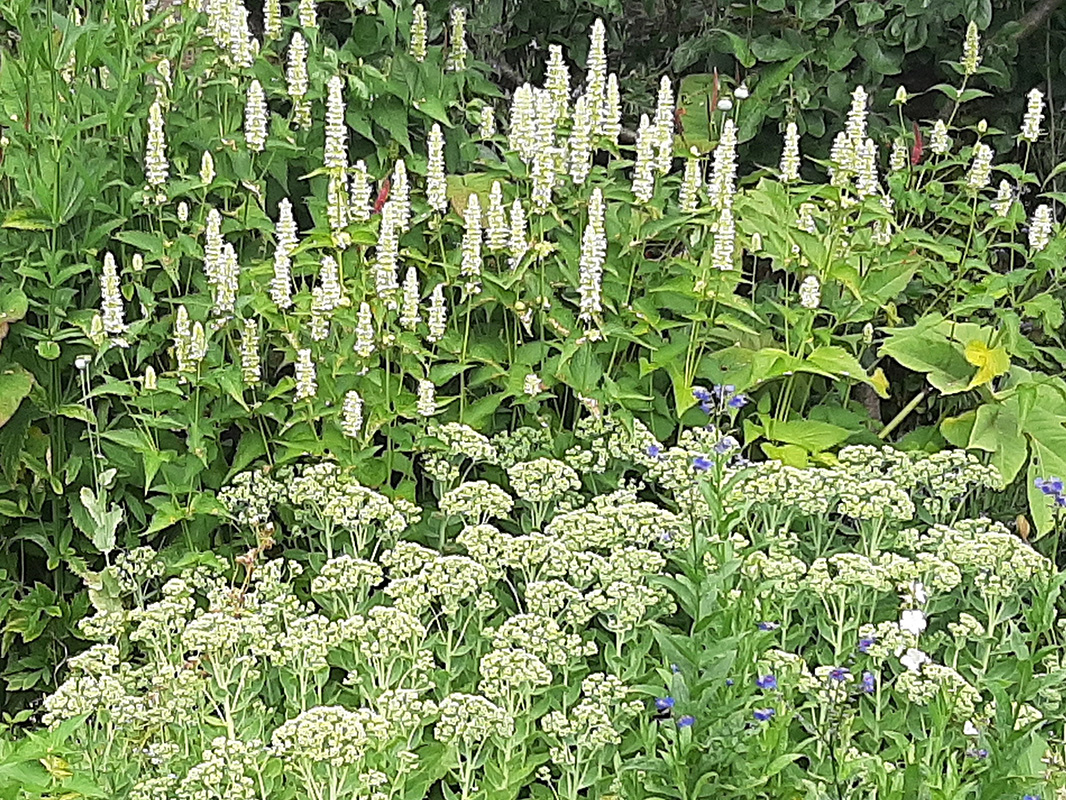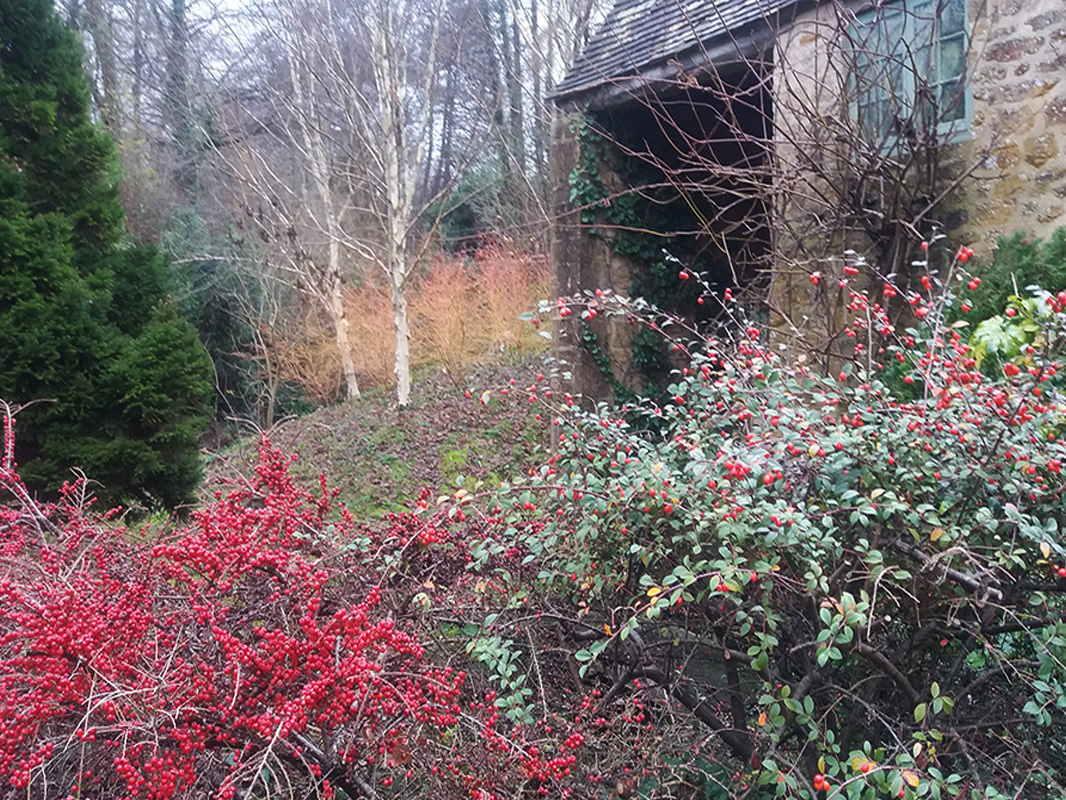My Top 10 Evergreen Shrubs
The holly and the ivy, when they are both full grown…etc etc….my, how we enjoyed singing the Christmas carols only a couple of weeks ago. The anticipation of Christmas gets earlier every year, despite my humbuggish grumbling at anyone mentioning the occasion before December. Consequently, the novelty wears off long before Twelfth Night, and the tinsel is back in the loft before New Year in many households.
Holly, ivy, yew, mistletoe and pine branches were traditionally brought into the house for decking the halls. This celebrated the turning of the year with evergreens, symbol of everlasting life. Despite having to make time to collect, trim and make a mess when making wreaths and table centres, I prefer the look and smell of real foliage to imitation.
Apart from the above, there are very few native evergreens in our landscape, so we must turn our gaze abroad for more subjects. With a view for planning your garden shrubby garden evergreens, dually purposed for garden beauty and Christmas opportunities, here are my favourites.
My Top Ten evergreen shrubs.
- Ilex J.C. van Tol Is a plain and nearly spike-free holly, most useful as a base for wreaths without tears. It is a self-fertile female with berries guaranteed and if you remember to cut some branches in November to preserve the berries from hungry birds, you are more organised for Christmas than me. I should like a Handsworth New Silver as well, for knuckle-shredding variegation in my decorations.
- Choisya ternata is the Mexican Orange Blossom, whose cheerfully glossy leaves and habit of flowering twice a year make it a garden stalwart. The leaves release a spicy scent as they dry. Choisya Sundance is a lime green version when grown in semi-shade which brightens up the display indoors. It goes a nasty yellow in full sun which will scorch the leaves when too hot.
- Ceanothus Concha. A species from California, this evergreen does not shed its leaves for a good while when brought indoors. The royal blue flowers in May are a delight.
- Prunus laurocerasus ‘Rotundifolia’ is cherry laurel, native from Albania to Iran, its large leaves useful for bulking out swags. It makes a large and vigorous hedge requiring a yearly cut back. The pruning books will give dire warning of trimming it and leaving its leaves mangled instead of cutting the twigs with secateurs. It rapidly grows out past any carnage and does not seem to mind. Unlike the vile leylandii hedge, it will tolerate being cut back to the trunk every ten years when it has grown too big.
- Cistus ladanifer is a Mediterranean sunrose with sticky incense- scented leaves. It will grow to 5 feet high, with maroon blotched centres to the white flowers in June. It does not like to be cut back to old wood at all, and you should start a new one every 5 years or so, culling the old ones when they get too leggy.
- Cupressus ‘Goldcrest’. Bred from another Californian native, this conifer might win a place in my garden if I decided to go all fashionable about my Christmas colours and have a lime, plum and copper colour theme. Only once did I try this, and it was effective, but my Christmas preference is for crimson and gold and every grubby papier mache and glitter bauble my children made years ago.
- Hedera ‘Manda’s Crested’ is a green ivy hybrid with a jaunty curve to its shiny leaves, unlike our native ivy which is dull and flat. I must have it to hang off the ends of the mantelpiece swag. However I cannot persuade anyone that ivy is an asset to the garden, once they have had to rip it out of hedge bottoms. Ivy is perfect for ground cover in the driest shade and looks wonderful as a companion to white cyclamen.
- Mistletoe. By the time the berries ripen, it will be February and you will have forgotten all about Christmas and your resolve to find some berries and press them into the bark of an apple, hawthorn, rowan or willow in your garden. It is said that it will take best on the same species of tree you gathered it from, but I have not seen proof of this. Happy is the owner of mistletoe, for a giant bunch hung above the unwary may be the only Christmas trappings necessary.
- Prunus lusitanica angustifolia. The Portuguese laurel makes a very good hedge with smaller darker leaves and slower growing than cherry laurel. The leaves in wreathes stay a good green all Christmas in the warmest heating.
- Abies nordmanniana is a native fir of the Black Sea coast of Georgia and Turkey, now popular as a Christmas tree as it does not drop its needles. I have just bought a shapely potted specimen from Chard Garden Centre, £35 and over a metre high. It will remain outside in its pot until about 20th December and come indoors to grace the sitting room bay window for ten days. It will then be de-potted and planted out for the season in the vegetable patch. The last Nordmann fir lasted 5 Christmases before it got too big, sickly and shapeless. My New Year resolution is to remember to spring prune and feed this one. If I had room, I might grow some Colorado Blue Spruce varieties such as Picea. ‘Edith’ or ‘Super Blue’ from seedlings just for the Christmas foliage.



